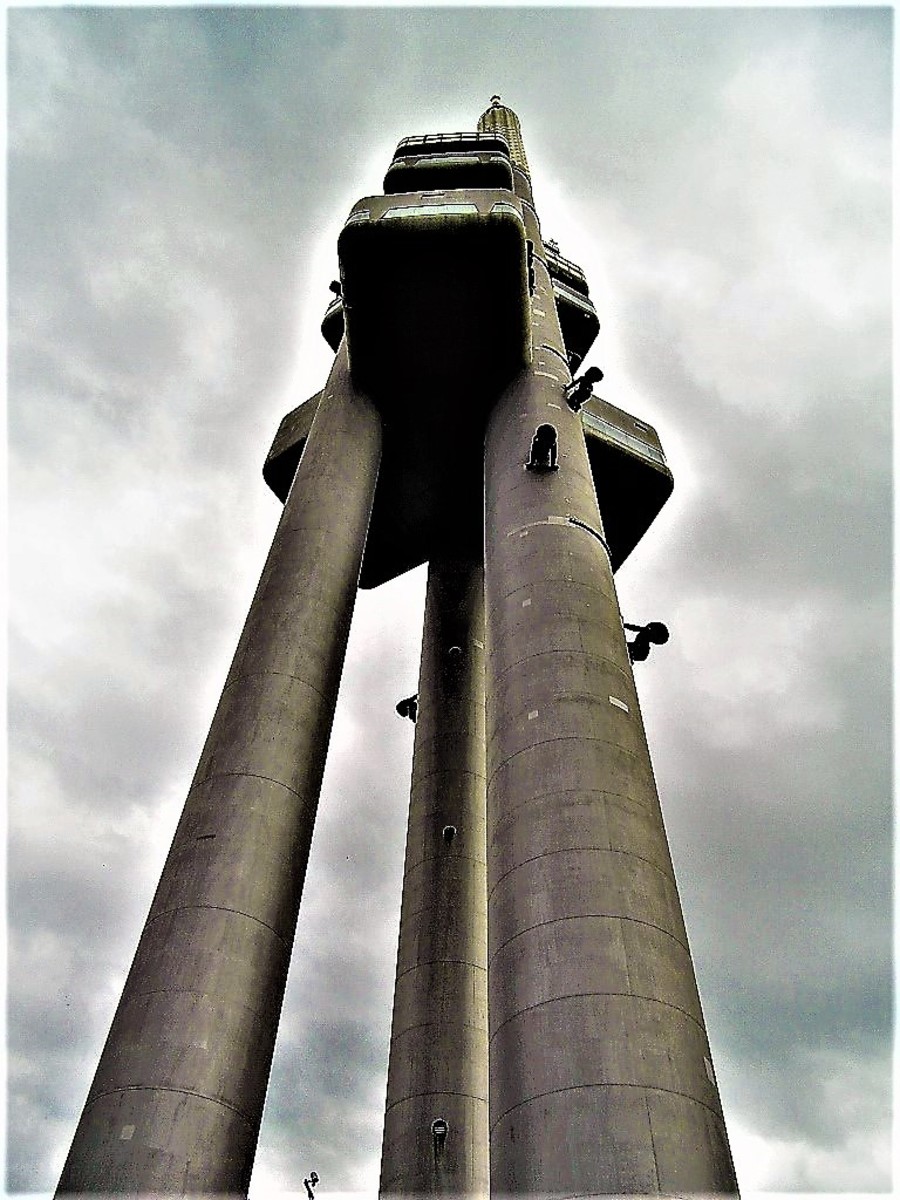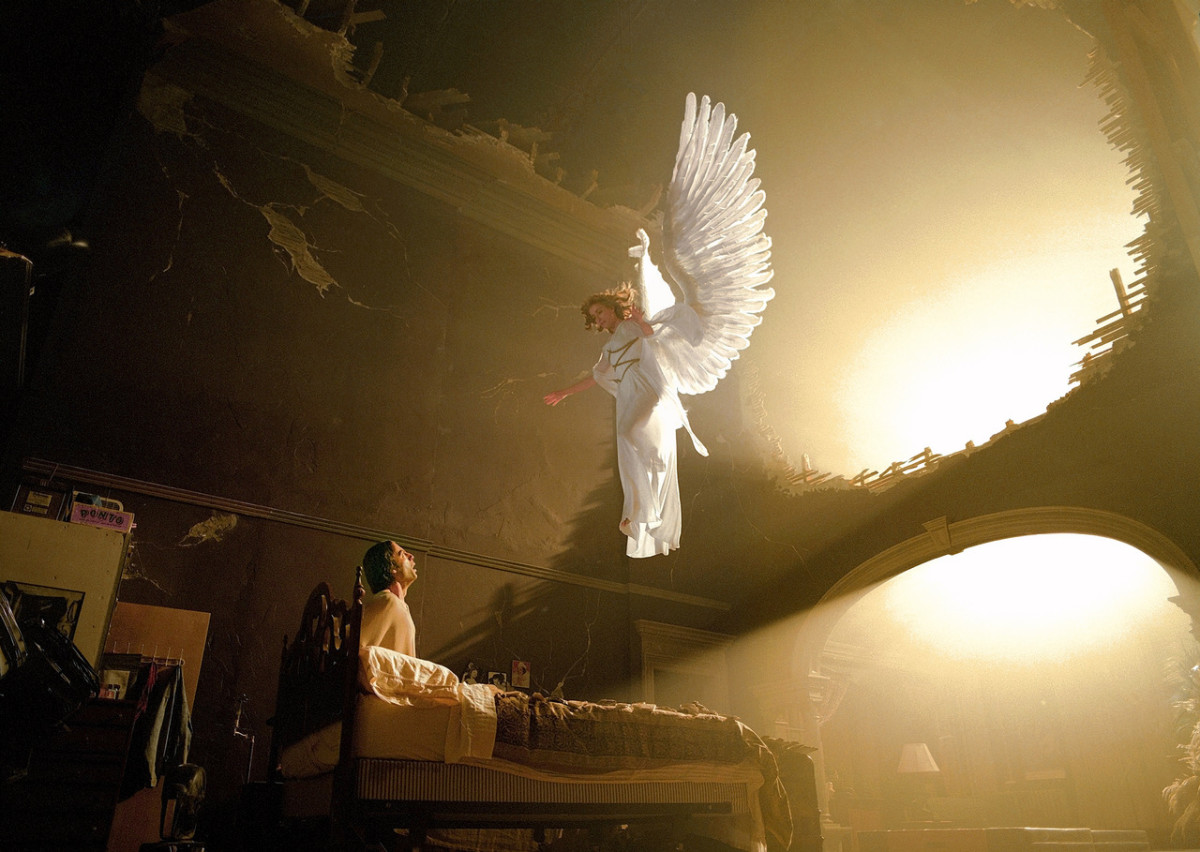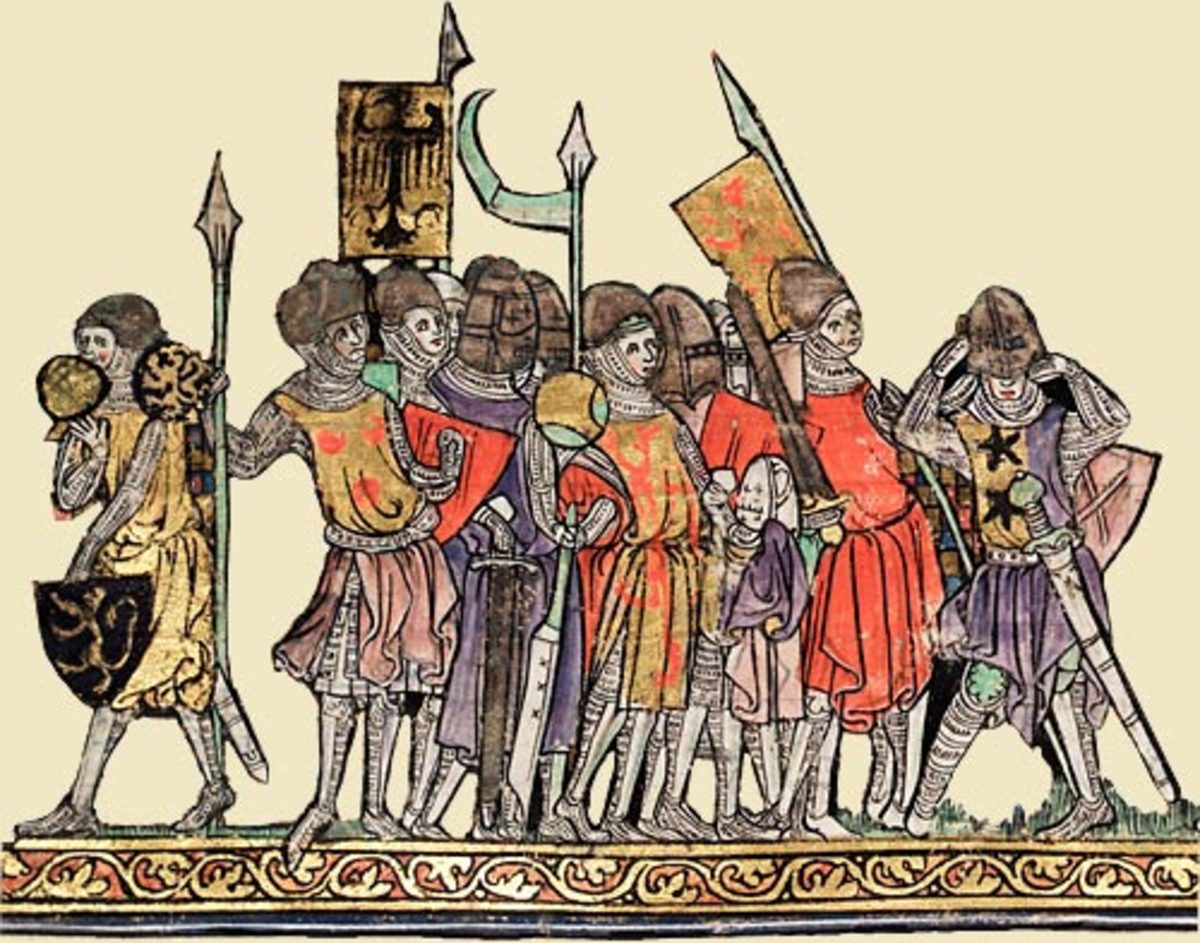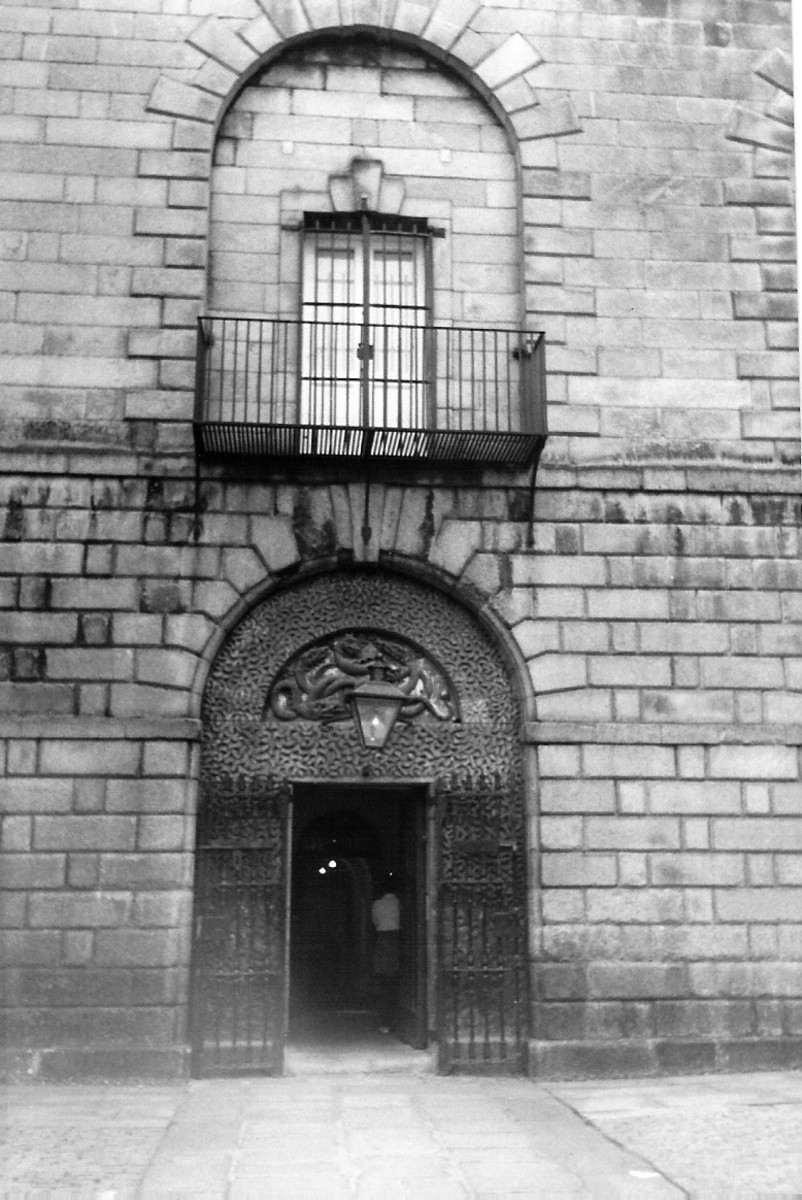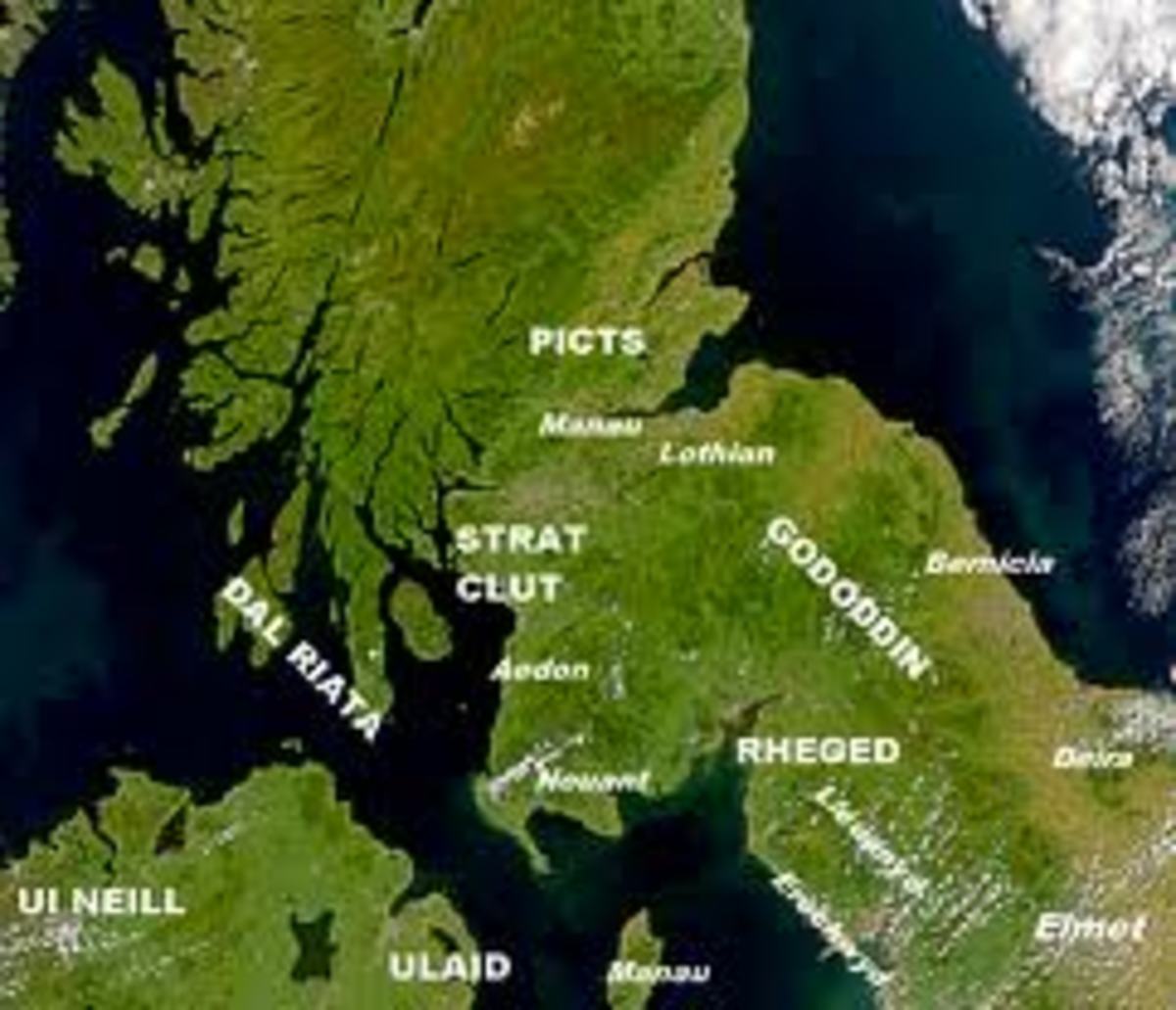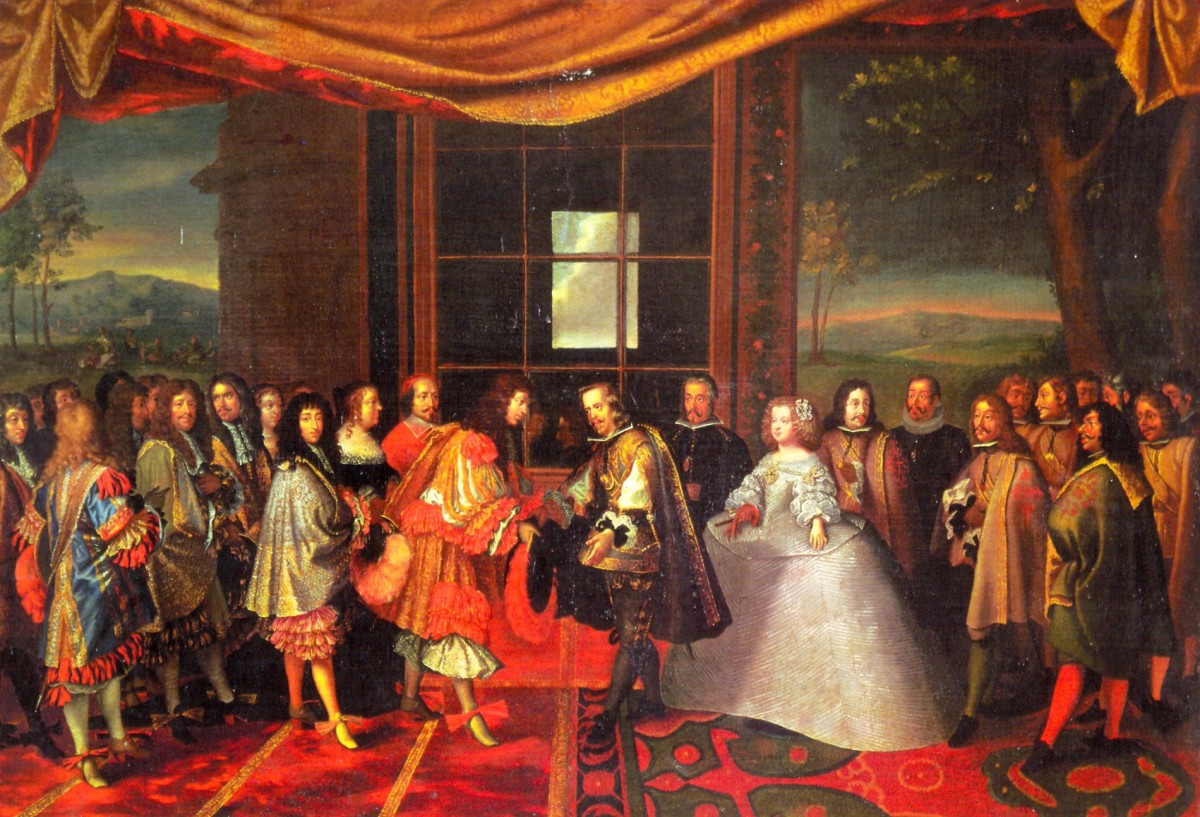The History of Arundel Castle
Arundel Castle is in West Sussex, high on a hill. It was founded by Earl of Arundel, Roger de Montgomery on Christmas day of 1067. Montgomery was one of William the conqueror’s most loyal barons at the time. He built the castle in part of the third of Sussex he owned to protect the town from attacks. This was an excellent place to build the castle because it had so many natural defences; that is why the site was chosen.
The castle has many natural defences. On the east side it has a cliff with an eighty foot drop, making it impossible to attack on that side. In the south it had a river – the River Arun–, which made it extremely difficult to get an army across. It also had a huge open area, which meant that if anyone were too attack it, they would be extremely vulnerable to attack from arrows, and other such weapons like stones in catapults, or later on in the seventeenth century, cannons. The west was the weakest point of defence and was the side that any army would attack from; this is why it was the most armed section of the castle. In the north, there is a great view of fields that goes on for miles, which would allow guards to see their enemies very early on and be able to prepare properly.
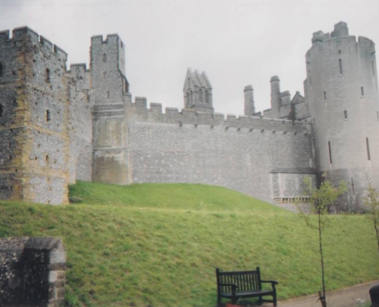
Also in the north, leading into the west, there was a dry moat. This would have been even greater if it had water, because it would make it more difficult for anyone to attack past that point, but it was impossible for it to be a wet moat because there was a slope, and if there were water in it, it would be lower in one part and very high in another which would cause Arundel more problems.
Even without the water, there was a very steep hill, which is in fact all the way around the castle. This will wear the enemy out, making him slower and make him a vulnerable target as there would be nowhere to hide.
There were also defences that were built to protect the tower, such as the curtain walls. In the south, they are about twenty-five feet tall, and strong. It would be extremely difficult to get over and even more so because the enemy will be being shot at by bowmen in the castle itself while they are trying to get over.
The round tower is recent and was not put up until the nintenth century. The cylinder tower was invented in the late thirteenth century, but was not updated on this castle and as you can see, it is the one tower that is this shape; all the others are rectangular. From the picture below, you can see the difference between the two types.
It is better for the towers to be cylindrical because it will protect the castle more by allowing arrows, and later cannons ricochet off of it, where as the rectangular tower will be damaged more severely.
The cylindrical towers were first introduced in the middle east in the late twelfth century, and it then went to France. It came to England later and was built in Arundel by the order of Kind Edward the first, in the thirteenth century.
At the front of the castle, it shows that there is a Norman window that is covered up. You can tell it is Norman by the arches that it has; this is a typical Norman design and was done during the reign of King Henry the second.
On the west side, there is a lowering curtain wall. It lowers because the land is on a slope and if it was kept at the same height all the way along you would have a huge wall that’s many feet high. The wall would in fact be the same height, just lower down because the land was lower down. This curtain wall was around the gatehouse.
The wall on the west side is Norman. You can tell this because it is made of flint and all the windows and arrow slits are very round and arched. The wall was rebuilt like this by Henry the second in the twelfth century, because the castle needed more protection.
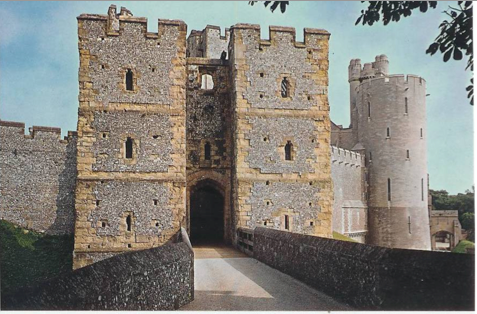
Most of the castle that is left today is not the original castle, for it has been improved and repaired so many times by different people from different centuries. There are parts of the castle from:
o The Victorians
o The Normans
o The Middle Ages
o The Tudor Period
o The Eighteenth Century
When you get to the north side, you can see the walls are made of flint and stone, which would suggest that it is not Norman, but in fact from the fourteenth century. It is on the north side, that there is a Barbican. This was made in the fourteenth century to give the castle more defences. In this Barbican, there were two, portcullis’s that would trap the enemy that it went into it and also, kill them if they were under it when it was dropped. The other advantages it has are: the fact that it is very narrow, which makes it difficult to attack your opponent or get more than a few people through at a time. Although it made it more difficult for the enemy, it also made it more difficult for the Arundel soldiers as well.
Outside the front and back of the building, there are two Brettrice doors, – one at either end – which guards could use to throw stones at the enemy, pour scolding hot water and boiling hot oil at them as well. This would have burnt them severely and the wounds would probably never heal. The enemy would be too injured to fight and might be captured. The Barbican had four floors and with small windows and arrow slits.
The Keep is the shape of an arena where most of the people retreated in the attack by Stephen while Queen Matilda was there. This was often where the members of the castle would hide if attacked. It was a very safe part of the castle; it had to be because it had their dungeon-store room there. It was important that prisoners didn’t escape and that food wasn’t stolen. This is also why there was always a guard by the well because without water, they would die. This is where they kept their food stock and other supplies when under attack, so they didn’t run out during a siege. There is a flight of narrow steps from the well where there was a guard room that was purposefully kept cold so the guards would not fall asleep on watch. By the store room, is where the Guards drop the first portcullis in the Barbican.
The guards had to be by their posts, which meant they couldn’t leave the building to go to church. Instead, above them was a small chapel called St Martin’s. St Martin was the Patron Saint of France and died in 397AD for his faith.
The guards would often come into the chapel not only to worship, but also to get warm as there was a fire in the room. Also in the room was a sally port. This would have been used to send spies down to spy on their enemy with them knowing. This is a possible escape route that Queen Matilda may have taken to flee, although we cannot prove it.
There was once an outside spiral staircase that lead up to the lookout tower, but it collapsed and instead of replacing the old one, they built a new wooden one that was inside the chapel itself.
On the top floor – the second – (there was once three floors, but the middle one collapsed and was never replaced, which is why there is an old fireplace in the middle of the wall) there is a Garde Robe. This is what was used in the twelfth century as a toilet. It was basically a big hole at the top of the tower. This could have been a problem to those with poor balance.
Apart from the Keep, Matilda’s room was the safest place in the castle. It was well protected because she could easily reach the Keep and there was a passage to the Barbican underneath. She would have used the original Norman door, but it was soon afterwards sealed off and replaced by another door to make it safer in the late twelfth century. This was done because it was within the castle, where as the Norman one was outside of the castle.
Matilda’s room was dim, with only a few torches on the flint-stone walls (now some of which are Norman), the floor was made of wood and there would have been very small windows. There would have been a fire place and it would have been likely that she would have had tapestries around it, so it would save the heat and keep the room warm.
There was a lot of work done to the castle between the twelfth century and the nineteenth century. Such as improvements, repairs, restoration and advances. For example:
o The curtain wall – twelfth century
o Motte Foundations – twelfth century
o Garde Robe – twelfth century
o Replaced Norman door – twelfth century
o The Barbican – fourteenth century
o Round Tower –thirteenth century
o Top of Bevis Tower – nineteenth century
- Queen Matilda : Biography
Matilda, the daughter of Henry I and Edith of Scotland, was born in 1102. In 1114 she married the Emperor Henry V but returned to England after his death in 1125. - Arundel Castle & Gardens
Arundel Castle is a restored medieval castle and stately home in Arundel, West Sussex, England.
We are in fact still making restorations to it today, but we are using the original materials used. Out of the original castle, only the Kitchen and a part of the Curtain wall remain. There was a lot of restoration in the nineteenth century by the Victorians. A fair amount of work was needed on the castle, but unlike now, they didn’t use the original materials, but instead used their own and rebuilt the castle in their own style, which made more than half the castle Victorian instead, because they wanted to show they’re own style, instead of restore what used to be there. Arundel is one of the longest country houses that have been lived in, in England. It has been passed on to many families such as:
o The d’Albini
o The Fitzalans (thirteenth century)
o The Howards (sixteenth century)
Richard Fitzalans was the one who built the Barbican, which increased the castle’s defences in the late Middle Ages significantly. He is also the one who added the curtain wall around the gatehouse.
Despite the great work that Richard did, many of his decedents were executed (beheaded) for questionable choices they made that were not the same the monarch reigning at that time. For example, Edmund, the second Earl of Arundel was beheaded in 1326. Even though The Earl of Kent was not a Fitzalan, he was given the rights to the castle.
This is an important part of the Middle Ages because the eleventh Earl was someone who supported Henry the eighth wish to divorce his first wife Catherine and the twelfth Earl was Henry’s Godson. The next family the castle was passed on to was the Howards in the Tudor Period. The first Howard was Phillip, who was Henry Fitzalan’s grandson. Phillip’s other grandfather, Thomas did not agree with Henry the eighth’s abolishment of the Catholic faith in the country in 1536 even though he did influence two other of his marriages to Anne Boleyn and Katharine Howard, who both lost their heads and were Thomas’s nieces.
Because Of Thomas’s fight to stop Henry get rid of the Catholic faith, he was sentenced to death, but the day before his execution, Henry died and Thomas was saved.
The Howards were a big part of Arundel’s history; they were there in the Tudor period, during the Wars of the Roses and the Civil War.
The English Civil War was between 1642 and 1651 and during that time (1643) the original castle was besieged by General William Waller, with his army demolished the building. Although the castle took major damages, the Norman Keep, the gatehouse, the Barbican and the lower part of the Bevis tower survived.
In the eighteenth century restoration started and between 1870 and 1890 it was almost completely rebuilt by the Victorians with a Gothic style design.
Comparing Arundel Castle to Bodiam Castle, you can see these differences:
o Arundel was built in the eleventh century, where as Bodiam was built in the fourteenth.
o Arundel has a dry moat, but Bodiam has a wide moat with water all around.
o Arundel is protected by a lot of trees, but Bodiam isn’t.
o There are hills around Arundel, but not Bodiam.
o Arundel had round towers constructed after it was built, where as Bodiam had them made at the same time it was built because of the time it was made.
Castles today, including Arundel are used for different purposes than they were in the past. Arundel Castle used to be used for Kings and Queens and other royalty. The castle would have been home to people, and give defence to their towns; it would be armed to attack and the enemy and defend itself. It would also be where the rulers made their decisions about the town and the rules that they would obey. This very different from today. Castles today are used for tourism. People can visit the castle, learn about its history and enjoy its well crafted walls.
Arundel castle was far more sophisticated than its time. Although there was a huge help from all the natural defences it had, such as the dry moat, the cliff and the open space, it was also due to great ideas and work of the people who helped build it.
For most of the time, improvements were made to Arundel castle before any other, the only main exception being the round tower, which wasn’t updated until the nineteenth century where most made the improvements in the late thirteenth century.
Apart from the hard work put into the people who reigned/worked there, another reason for its constant improvements was due to small attacks on the castle, which forced them to do repairs and improve it as they went along. Those small attack helped the castle survive all the hard, long and more stratified attacks on the castle, which without the improvements would probably not have survived.

